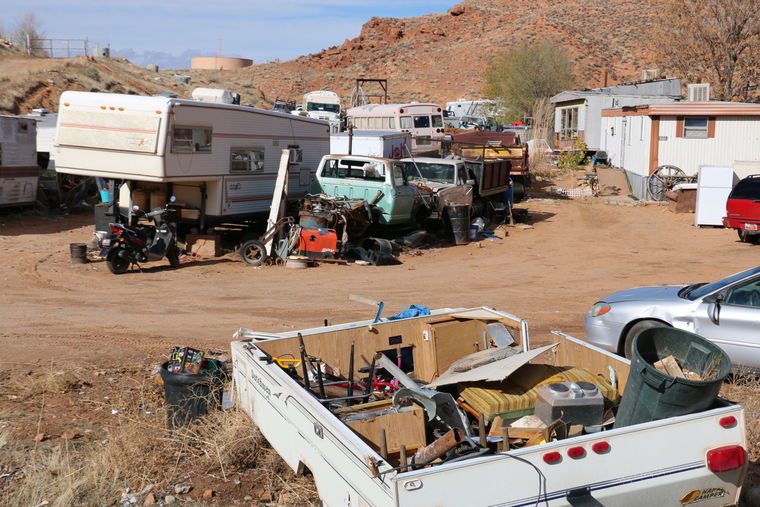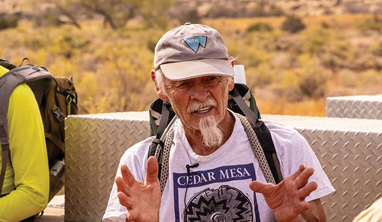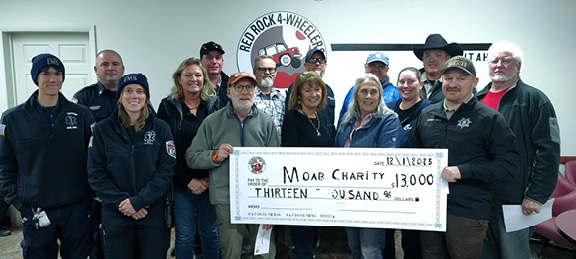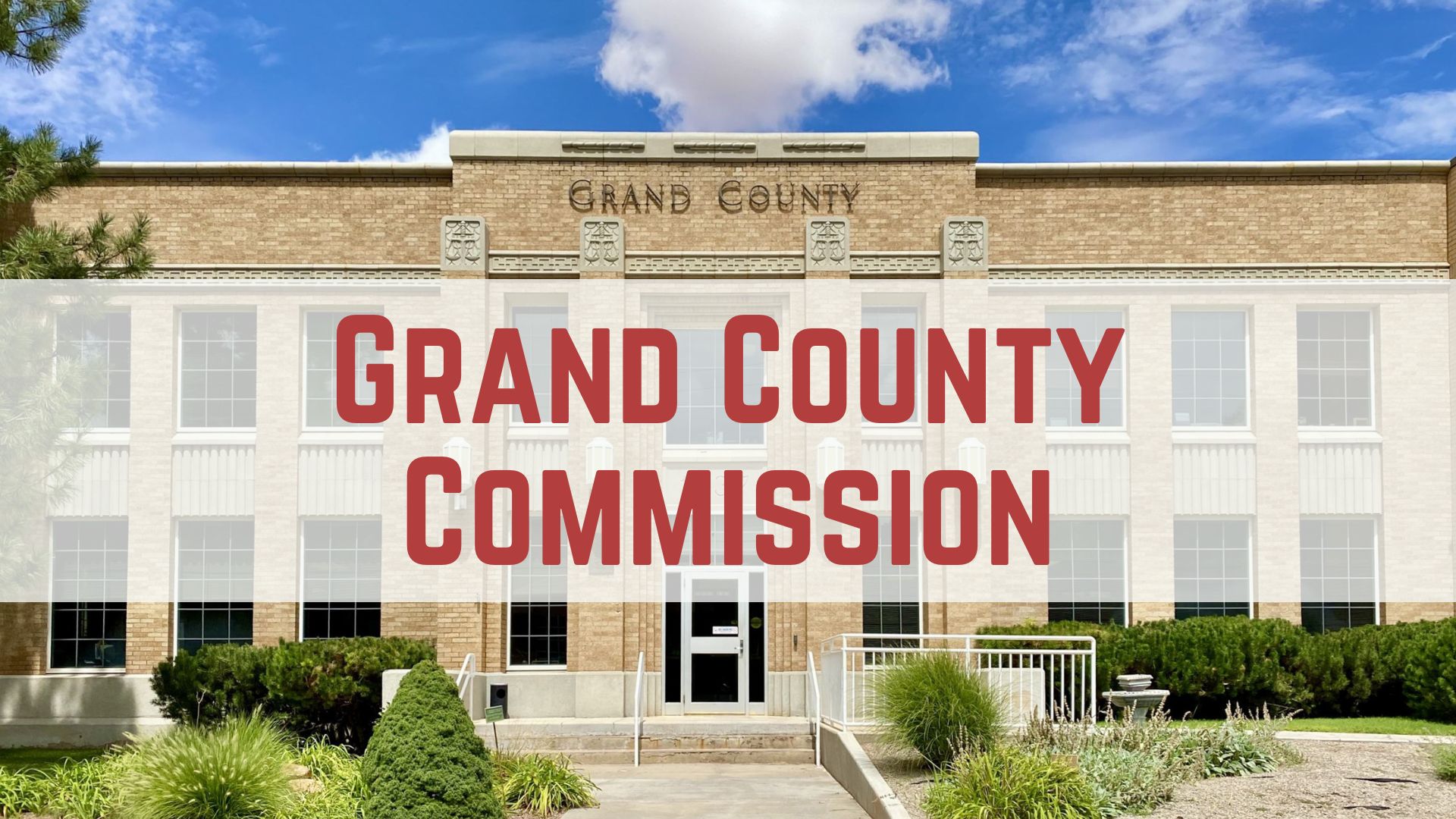Some information may be outdated.
The Grand County Council approved an ordinance last week that clarifies the county’s land-use code by providing new definitions of refuse, debris, junk and inoperable vehicles. Community Development Director Zacharia Levine had recommended creating such definitions to facilitate the work of the part-time code enforcement officer position the council approved earlier this year.
“What I’m trying to do is make the eventual job of a code enforcement officer easier,” Levine said at the council’s Apr. 4 meeting. “Nobody in our office is looking to go around the county with a heavy hammer.”
He said the county had been waiting to move forward on several potential code violations until they had greater clarity.
“I think it’s an unwise use of our time to try to address things that aren’t clearly (defined) by our code,” he added.
Grand County previously defined “garbage,” “refuse” and “community waste” in a series of ordinances in 1981 and 1983, but those definitions remained separate from the land-use code. The two sets of definitions are “slightly different,” Levine said. In discussion, the council hesitated to introduce new definitions before repealing the existing ones.
“There would be about an overlap of about a month of potentially conflicting ordinances,” council chair Jaylyn Hawks noted.
But with reassurance from Levine and from Grand County Attorney Andrew Fitzgerald, the council eventually agreed to pass the ordinance.
As written, the ordinance adds three definitions to Article 10 of the Grand County Land Use Code. In the first, “Refuse, Debris or Junk” is now defined as “including but not limited to” salvage, scrap, appliances, mechanical equipment, vehicle parts, metal, rope, bags, batteries, paper, wood, plastic, rubber, tires and chemicals “in unkempt condition.”
It also applies to yard or kitchen waste, “including but not limited to” waste not used for composting, household or construction trash, or other articles or materials commonly designated as refuse “in any condition.”
Council member Chris Baird drafted that definition, and he said in an interview after the meeting that he wanted to avoid naming any specific items or materials.
“The way that the definitions started off, as a list of materials – everybody has that stuff in their yard,” Baird said. “How would anybody decide that what was in somebody’s yard was junk or not?”
“I redrafted the definitions so it made it more clear that it wasn’t just a list of materials that could be considered junk,” he said, “but rather the condition that they’re in and how well the property owner is taking care of them.”
Fitzgerald told the council that a list of specific materials could limit the county’s ability to enforce the land use code in the future.
“We don’t want to paint ourselves into a corner because we didn’t name a type of trash,” he said.
Although the new definition still leaves room for subjectivity – “Place yourself in the shoes of that enforcement officer, having discussions about what’s organized or unnecessarily scattered,” Levine said during the meeting – Baird was satisfied that it would give the code enforcement officer a clear standard without being unnecessarily strict.
During the meeting, he suggested the council focus on accumulations of junk that might pose a danger to the property owner or to neighbors, rather than set aesthetic restrictions similar to those imposed by homeowners’ associations.
“Do we want to, as a county, adopt standards that could be parallel as countywide restrictive covenants? My opinion is no, we shouldn’t,” Baird said.
Council vice chair Mary McGann agreed.
“I also want what we adopt to focus more on the health and welfare and safety,” McGann said.
Hawks, however, defended the principle of aesthetic restrictions. She said most people expect their neighbors will keep their properties in at least a “semi-orderly” state.
“I don’t think we can throw aesthetics out altogether,” she concluded.
These differences in approach did not prevent the council from settling on Baird’s proposed definition. The content of the other two new definitions proved less contentious.
A “Registered Vehicle” is now defined as one “currently registered” with “a license plate … affixed in a fashion authorized by Utah law.” An “Inoperable, Wrecked, or Unregistered Vehicle” is one that is not “immediately operable,” requires repairs or new parts, fails to meet the Utah Safety Code, or lacks a license plate.
The county’s land-use code states that no inoperable vehicle may be stored on any “yard, open yard space, open space or land in any district.” In combination with the new definition, this makes it illegal to store a vehicle that doesn’t run. Baird, after the meeting, said he intends to revisit this language in the future.
“I think that there needs to be some allowance for it, if your car breaks down and you don’t have enough money to get it going,” he said.
The enforcement process for the land-use code remains complaint-based. Levine said that if his office receives a complaint, the code enforcement officer will investigate, and notify the property owner if there’s a violation. If the owner doesn’t fix the problem within the compliance period, another violation notice is sent. In the event that the violation is not corrected after the second compliance period closes, the officer can issue a citation. The minimum fine is $100 per day.
“At that point we hand it over to the attorney’s office,” Levine said.
Fitzgerald said that the most difficult part of enforcing the land-use code is often finding a witness: Neighbors don’t often want to act as witnesses against each other. The code enforcement officer will be able to serve as a witness to prosecute owners of “massively junky, really problematic” properties, he said.
In an interview after the meeting, Levine said that the ordinance was “part of a longer-term process.”
“Ensuring that we have clarity on the definitions of these terms is central to the longer-term project of code enforcement,” he said.
He cited incentive programs in Uintah and Duchesne counties as examples of ways the county might help proactively assist property owners to voluntarily dispose of junk and debris. Duchesne County, for instance, gives owners of inoperable vehicles entries into a cash prize drawing if they have those vehicles hauled away.
Volunteer groups could also help with mitigation and removal, Levine said.
“I would prefer it be done that way,” he said. “There’s very much a role for a citizen group to play.”
New language intended to make code enforcement clearer
We don’t want to paint ourselves into a corner because we didn’t name a type of trash.
Appreciate the coverage? Help keep local news alive.
Chip in to support the Moab Sun News.





